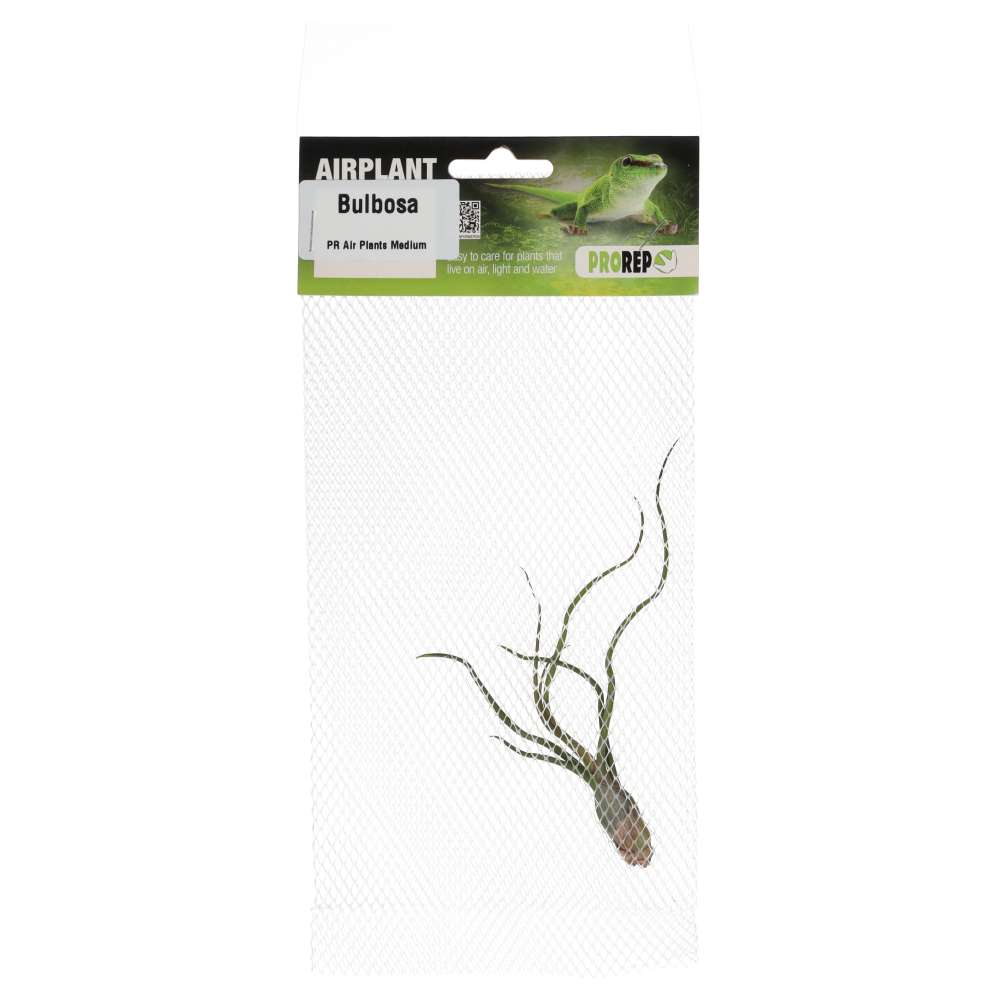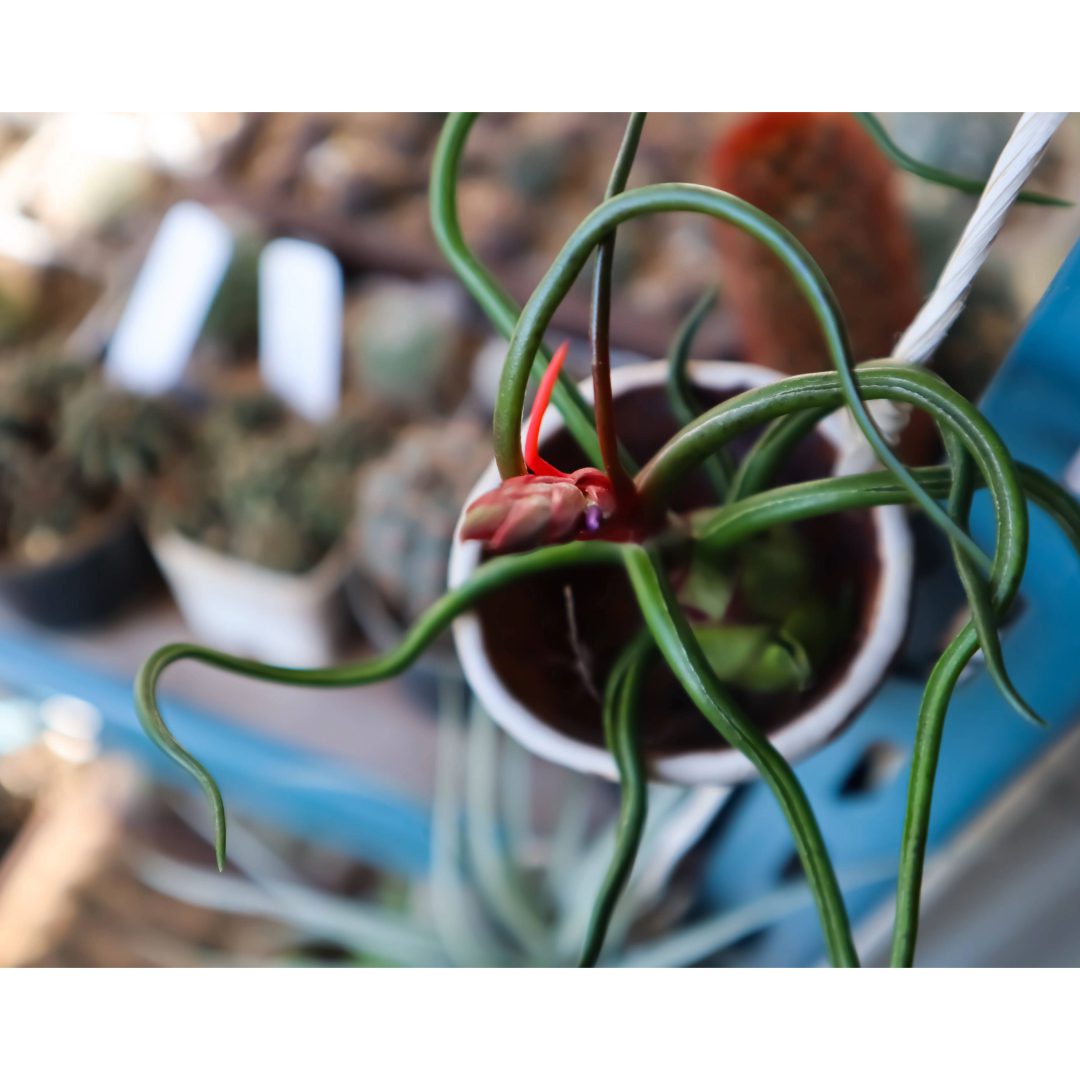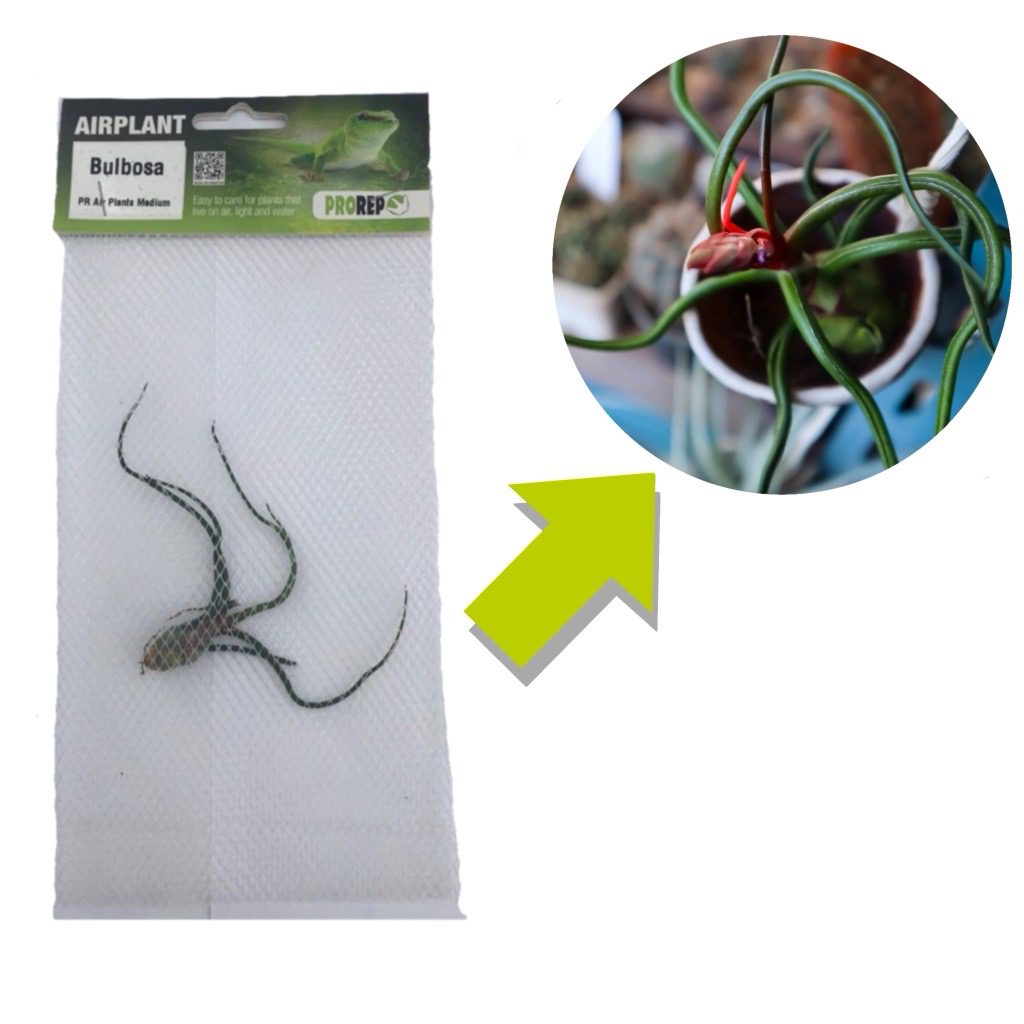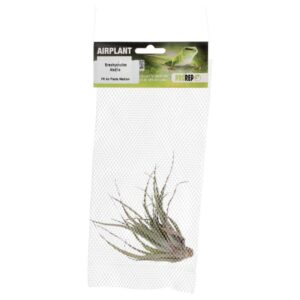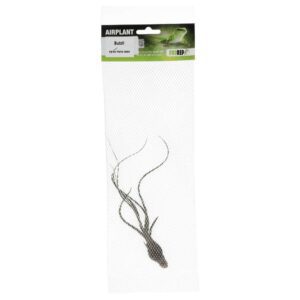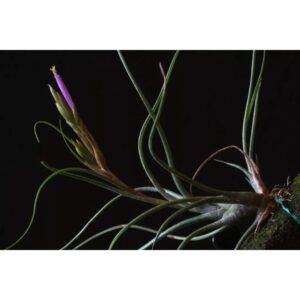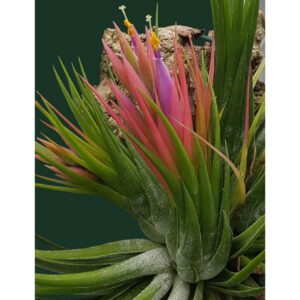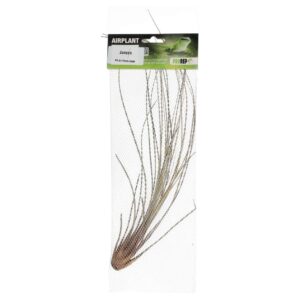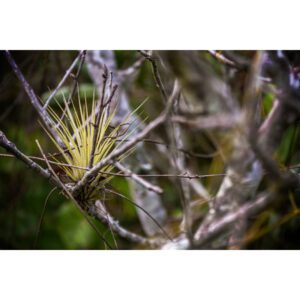Tillandsia bulbosa
Mature Appearance:
Distinctive bulbous base (1–2 cm diameter) tapering to ±20 cm of curly, inverted‐V leaves (greyish‐green).
Overall “bulb” size ~3 cm across, with long, tapering leaves that curl downward.
Flowers: slender spike from bulb with 1–2 tubular purple blossoms.
Life Cycle:
Bloom: After 2–4 years, sends up a single flower spike from the bulb.
Pups: Produces a ring of pups around the bulb’s shoulder; pups resemble miniature bulbs.
Mother Decline: Once pups are ~3 cm tall, the mother’s bulb shrinks and eventually dries out, leaving a cluster of pups.
Enclosure Use:
Best Fit: Humid, forest‐type arboreal enclosures (e.g., frog, anole, small chameleon habitats).
Place higher on driftwood or among trailing vines—its hanging form creates a “nest” for climbing species.
Ideal for paludariums, as its bulb can sit above water and its leaves hang into the air, benefiting from humidity.
Care:
Light: Bright, diffused light; tolerates more direct morning sun due to its robust trichomes.
Water: Mist thoroughly 3×/week; soak 20 min every 7–10 days. Allow full drying between waterings—leaves should not stay wet more than 5 hours.
Airflow: Good circulation is critical to avoid rot at the bulb.
Temps: 20–28 °C; can tolerate brief dips to 15 °C but long cool spells may stunt growth.
Overview of Enclosure Placement & Compatibility
Arboreal Reptiles (Geckos, Tree Snakes, Chameleons): Mount mid‐ to upper‐level on cork bark or natural branches—air plants stay dry at leaf tips and provide perches.
Paludariums (Dart Frogs, Newts): Position so bases are above standing water but within mist zones; high humidity helps their growth and stability.
Terrestrial Reptiles (Small Tortoises, Skinks): Generally, avoid placing air plants on floor substrate where they stay too wet. Instead, mount on vertical surfaces.
Nocturnal Reptiles (Crepuscular Geckos, Tree Frogs): Many Tillandsias thrive in lower‐light understory conditions—select varieties like Ionantha scaposa or Brachycaulos multiflora that tolerate moderate light.
Basic Care Tips for All Tillandsias in Reptile Enclosures
Light: Most need bright, indirect light; avoid full midday sun inside a glass vivarium to prevent heat buildup.
Watering:
Misting: Use a fine‐mist sprayer; wet entire plant until beads form on leaves.
Soaking: Remove and soak in dechlorinated, room‐temperature water. For large species (e.g., T. fasciculata), soak 20–30 minutes; smaller ones 10–15 minutes.
Frequency: In a high‐humidity vivarium (≥70% RH), misting 2×/week may suffice. In drier rooms, mist 3–4 times weekly with a weekly soak.
Airflow: Ensure leaves dry within 4–6 hours to prevent rot. Use vent fans or leave enclosure slightly ajar after misting.
Temperature: Most thrive between 18–28 °C. Avoid prolonged humidity with temperatures >30 °C, which can lead to fungal issues.
Fertilizer: Optional: use a bromeliad or tillandsia‐specific foliar fertilizer at ¼ strength once a month during active growth. Rinse thoroughly after to prevent residue.
Mounting & Display:
Attach using fishing line, thin wire, or high‐temp silicone to cork bark, rock, or driftwood. Do not use glue that can leach toxins.
Position so water does not pool in leaf rosettes—provide an angle or slight tilt to assist drainage.
By integrating these air plant species into your reptile vivaria, you create a more natural, three‐dimensional environment—offering climbing surfaces, humidity buffering, and visual interest—while providing minimal maintenance needs. Proper placement, regular but moderate watering, and good airflow will ensure your Tillandsias thrive alongside your reptiles.
SKU: PPA018
PR Airplant Medium Bulbosa
£5.49
Air plants provide long lasting natural decor for terrariums and can be attached to vines, stones, trunks, in fact almost anything for a naturalistic finish.
Additional information
| Brand | ProRep |
|---|

